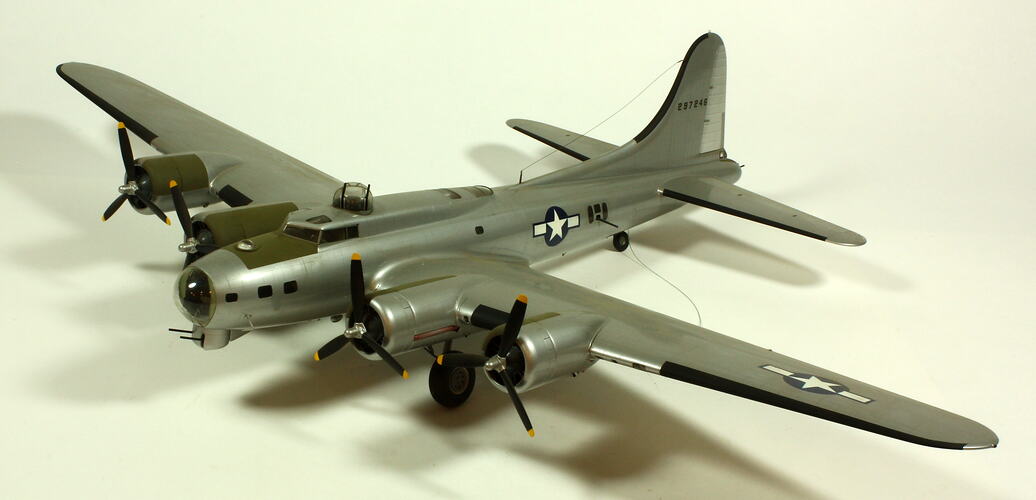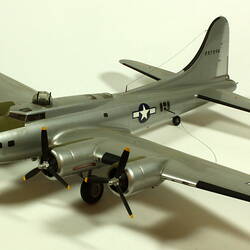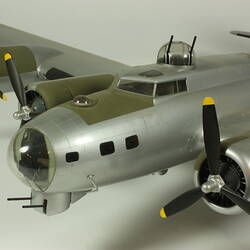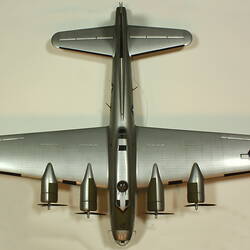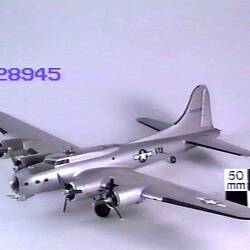The Boeing Airplane Company, based in Seattle, USA developed one of the first generation of all-metal stressed-skin airliners with the Boeing Model 247 first flown in 1933. In response to a 1934 US Army Air Corps requirement, Boeing proposed a four-engined long-range heavy bomber to allow for greater bomb-loads and better high altitude performance. The initial Y1B-17 test aircraft of 1937-38 were a success and volume production began with the B-17B in 1939. The B-17C was ordered by the Royal Air Force as the Fortress I. From 1942 to 1945, the B-17 equipped most of the USAAF bomb groups in the Eighth Air Force based in Britain. These groups carried out the long-range daylight strategic bombing campaign against Germany.
The B-17G was by far the most numerous type to be flown operationally and incorporated improvements such as a front 'chin' turret. Of the 12,731 B-17's built, 8,680 were B-17G models. The G model was flown by the RAF as the Fortress III. Earlier model B-17D, E & F models were also flown in the South-West Pacific Area in 1942-43. Many of these aircraft were based in Australia or staged through Australia on their way to combat areas in New Guinea.
More Information
-
Keywords
-
Localities
-
Authors
-
Article types
